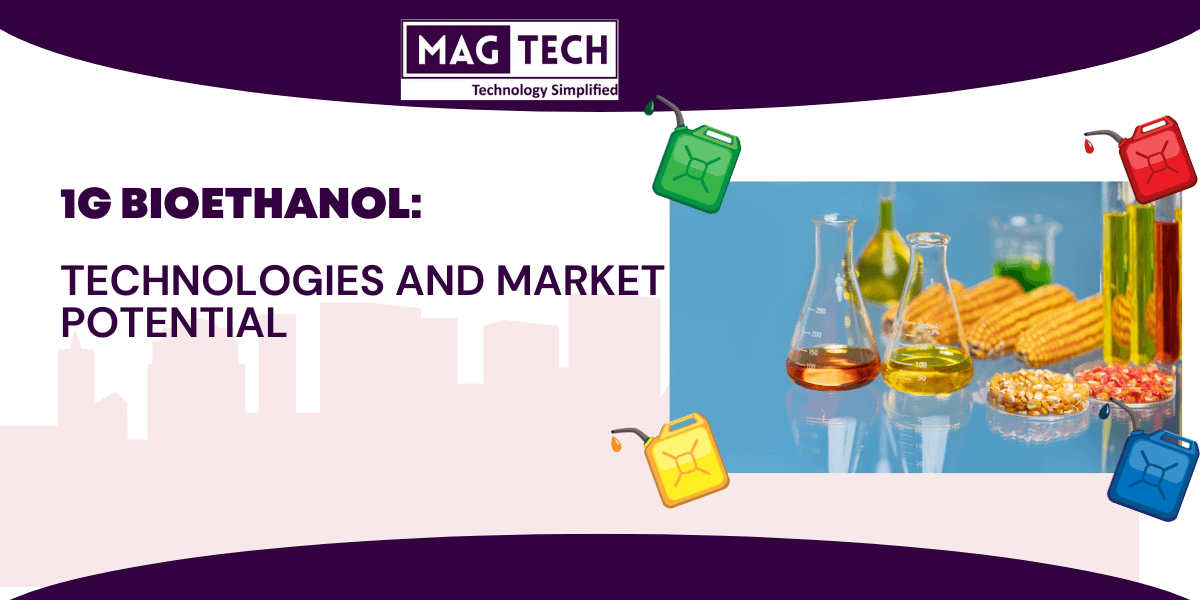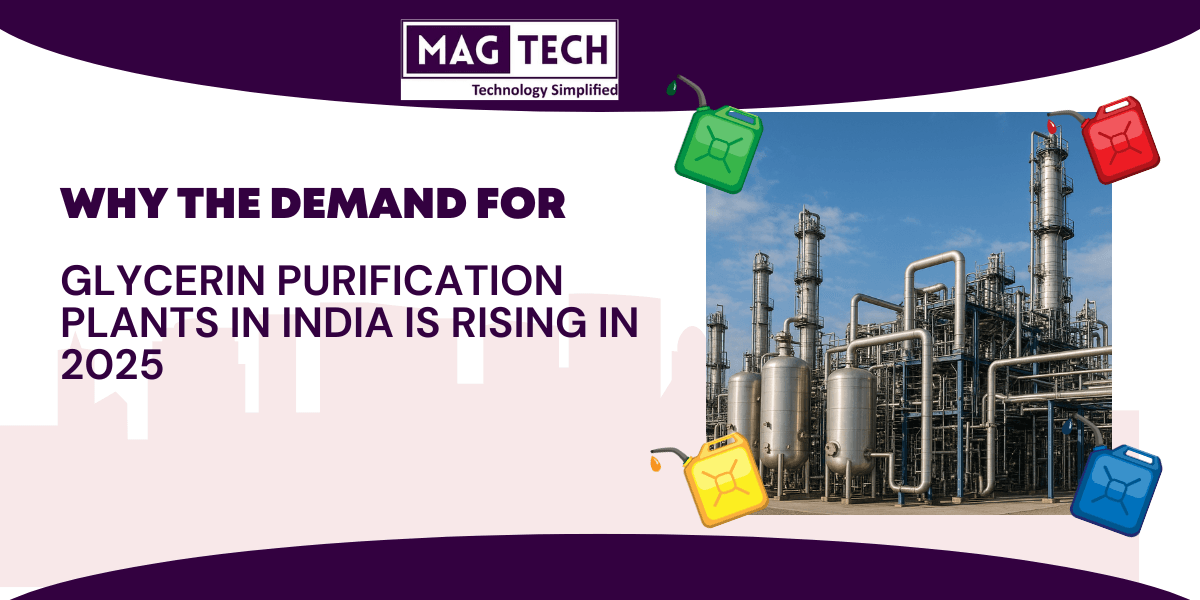The Indian glycerin market is rapidly expanding due to its versatile applications across various industries such as cosmetics, pharmaceuticals, and food. As more consumers shift towards health-conscious, natural, and organic products, the demand for glycerin in cosmetics and food items is steadily growing. Additionally, glycerin’s crucial role in the pharmaceutical industry, particularly as an excipient and in drug production, continues to drive market demand. For biodiesel producers, glycerin offers a profitable opportunity. As a by-product of biodiesel production, crude glycerin can be purified and sold to industries where it is in high demand. Biodiesel producers can capitalize on this by purifying glycerin; furthermore, they can do so by understanding the key factors and, in addition, breaking the cost of glycerin purification plant.
Table of Contents
ToggleKey Factors Influencing the Cost of a Glycerin Purification Plant
Starting a glycerin purification plant as part of a biodiesel production unit can enhance profitability and support sustainability goals. Here are the key factors to consider:
- Feasibility Study: Conduct thorough research on the market demand for purified glycerin. Identify potential buyers in sectors like cosmetics, pharmaceuticals, and food. Assess the availability of crude glycerin and calculate your production costs to ensure profitability.
- Location: Choose a location close to biodiesel plants to ensure a steady supply of crude glycerin. Proximity to your target market reduces transportation costs. Ensure the site has access to essential utilities like electricity, water, and natural gas.
- Regulatory Requirements: Secure the necessary business licenses and environmental permits. Ensure compliance with fire safety, health, and quality standards. Proper waste management and pollution control systems must be in place to meet regulations.
- Financial Planning: Estimate total costs, including land, equipment, labor, and utilities. Explore funding options such as bank loans or investor capital. Calculate the return on investment (ROI) and create a solid business plan to present to lenders or investors.
- Equipment Setup: Invest in specialized equipment like solid filtration systems, vacuum dryers, and distillation columns. Ensure the machinery is of high quality to produce purified glycerin that meets industry standards.
- Staff and Training: Hire skilled staff and provide training in safety procedures, equipment handling, and quality control. Regular training ensures compliance with regulations and maintains the quality of production.
Setting up a glycerin purification plant can transform a biodiesel unit into a profitable, eco-friendly operation. All we need is the right plan to establish a glycerin purification unit following the biodiesel production capacity. For that, we need to outline a baseline infrastructural to calculate the cost of glycerin purification plant.
Cost of Glycerin Purification Plant: Equipment and Infrastructure:
The cost of establishing a glycerin purification plant will depend on equipment, land, and other infrastructural requirements. Here, we will consider a purification unit of 10 tons/day capacity as a baseline.
1. Land and Facilities:
For a 10 TPD plant, the buyer must secure 25,000 square feet of industrial land. This space will accommodate the main plant, along with storage, feed tanks, and other essential facilities. Additionally, the buyer is responsible for building a boundary wall and preparing the site. A driveway, loading, and unloading bay should also be built, as these areas will be critical for the movement of raw materials and final products.
2. Factory Building and Power Supply:
A factory building of at least 2,500 square feet is required to house the refining equipment and essential operations. The buyer will also need to arrange for an electrical transformer or access to the main grid station to handle the additional load required for production. It’s also advisable to have a standby generator to ensure uninterrupted power supply in case of outages.
3. Storage Tanks:
Various types of tanks are necessary, including storage tanks, feed tanks, and buffer tanks. These will store raw materials like crude glycerin, as well as the finished product. Since glycerin production involves liquids, the right tanks are critical to ensuring safe handling and storage throughout the process.
4. Boiler and Compressor:
A boiler and a compressor will be required for various heating and pressure-related processes. The buyer is, therefore, responsible for sourcing these, which, in turn, play a crucial role in maintaining the appropriate conditions for refining glycerin.
5. Laboratory Setup:
A lab setup is essential for quality control and analysis throughout the refining process. The buyer must invest in proper lab equipment to ensure that the glycerin meets purity standards. Having a well-equipped lab, therefore, helps in testing and, in turn, improving the refining process as needed.
6. Automation and Control Systems:
The OEM will provide automation and control systems for both inside battery limits (ISBL) and outside battery limits (OSBL). These systems are, therefore, essential for monitoring, regulating, and, in addition, automating various aspects of the glycerin refining process
7. Main Plant Equipment:
The most important equipment includes the feedstock collector, glycerin separator, washing unit, and columns that handle the main refining processes. These are typically supplied by the OEM; moreover, they are integral to the operation of a glycerin plant.
8. Filter Press and Allied Assemblies:
The OEM also provides a filter press along with any other allied assemblies needed for the refining process. This equipment helps in removing impurities from the glycerin, ensuring that the final product meets quality standards.
9. Erection and Commissioning:
The cost of erection and commissioning of the plant is usually covered by the OEM, which includes the installation of equipment and ensuring everything is operational. However, the buyer is responsible for costs related to civil works, electrical appliances, and pipe fittings.
10. Other Auxiliary Equipment:
Additional equipment may be needed based on the plant’s specifications, including a shed for the filter press and commissioning consumables. These items are also part of the buyer’s responsibility. If a biodiesel production unit is pre-existing then the cost of this setup will be around Rs. 5 Crore excluding the land. This is an overview of the cost of glycerin purification plant excluding taxes, land costs, duties, transportation, packing, etc.
Other Costs Associated to Glycerin Purification Plant
Apart from the equipment and land resources, these factors also determine the cost of glycerin purification plant.
1. Compliance and Regulatory Costs:
One of the key expenses in setting up a glycerin purification plant involves compliance with environmental and industry regulations. To operate legally, the plant must adhere to safety and environmental standards, which often require securing licenses and permits. However, a functioning biodiesel production will have these permits and licenses onboard.These permits can include pollution control certificates, fire safety approvals, and occupational health and safety certifications. Adhering to these regulations is essential to avoid fines and shutdowns. Moreover, maintaining compliance often incurs ongoing costs for regular inspections and monitoring.
2. Labor and Operational Costs:
Operating a glycerin purification plant requires both skilled and unskilled labor. Skilled workers, such as chemical engineers and plant operators, are essential for managing the refining process and ensuring everything runs smoothly. Meanwhile, tasks like loading materials and basic maintenance may require unskilled labor. The cost of training workers is another important factor, especially in industries handling chemicals. Workers need to educate themselves in safety protocols, handling hazardous materials, and proper machine operation. Ongoing operational costs include wages, employee benefits, and safety gear like personal protective equipment (PPE).
3. Site Location and Infrastructure Costs:
The location of the plant plays a huge role in determining infrastructure costs. A site with easy access to utilities like electricity, water, and transportation can save significant setup and operational expenses.
However, industrial land in prime locations often comes at a higher price. Remote areas may have lower land costs but could increase transportation and utility expenses. The cost of connecting to power grids, ensuring access to water supplies, and building roads for transport are critical elements that contribute to the plant’s overall infrastructure costs.
4. Cost of Waste Management and By-product Utilization:
Handling waste produced during glycerin refining is another significant cost factor. Glycerin purification generates wastewater, residual materials, and other chemical by-products that must be treated before disposal. This often requires specialized waste treatment systems, which come with installation and ongoing operational costs.
5. Maintenance, Repair, and Replacement Costs:
Long-term operation of a glycerin purification plant, therefore, requires regular maintenance and, in addition, repair of equipment to prevent breakdowns. Refining equipment is exposed to wear and tear, which means components like filters, pipes, and separators may need replacement over time. Predicting these costs is vital for maintaining the plant’s efficiency and avoiding unplanned downtime.
Conclusion: Managing Costs for a Successful Glycerin Purification Plant:
Setting up a glycerin purification plant involves various costs beyond equipment. Compliance with regulations, labor needs, site location, and waste management all add to the financial burden. To ensure smooth operations, businesses must also plan for long-term expenses like maintenance and repairs.
However, with careful planning and potential revenue from by-products like recovered glycerin, these costs can be managed effectively. By considering all these factors, businesses can set up a successful glycerin purification plant while maintaining efficiency and profitability in the long run.
Incorporate Glycerin Purification with Biodiesel Production for Revenue Growth: The MAGTECH Advantage:
MAGTECH provides the ideal partnership for setting up a glycerin purification plant alongside biodiesel production. Our expertise, high-quality equipment, and a full range of services, therefore, offer clear advantages to plan and manage, effectively, the cost of glycerin purification plant.
Key advantages of working with MAGTECH include:
- Tailored Plant Design: Moreover, MAGTECH ensures your glycerin purification plant is designed to meet your specific production needs. This customization helps maximize output and efficiency.
- High-Grade Equipment: Their refining systems are built using durable materials like SS 304, ensuring long-lasting performance with minimal downtime.
- High-Grade Equipment: Their refining systems are built using durable materials like SS 304, ensuring long-lasting performance with minimal downtime.
- Fully Automatic Operations: MAGTECH’s systems are fully automated, reducing manpower needs while ensuring consistent, high-quality glycerin output.
- Comprehensive Services: They provide support from plant erection, commissioning, and trial runs to troubleshooting and after-sales service. MAGTECH’s team ensures smooth operations every step of the way.
- Quality and Compliance: The refined glycerin meets stringent quality standards, ensuring it’s suitable for use in various industries, from pharmaceuticals to personal care products.
- End-to-End Support: MAGTECH also assists with sourcing raw materials and marketing the by-products, streamlining the entire biodiesel and glycerin production process.
Our expert team at MAGTECH will guide you through every step of setting up a glycerin purification plant, ensuring compliance, efficiency, and profitability. With our state-of-the-art technology and comprehensive support, you can turn biodiesel by-products into a valuable revenue stream. Reach out today and maximize your production potential.
Ref URL: Information taken from MAGTECH project offer document and elaborated.


